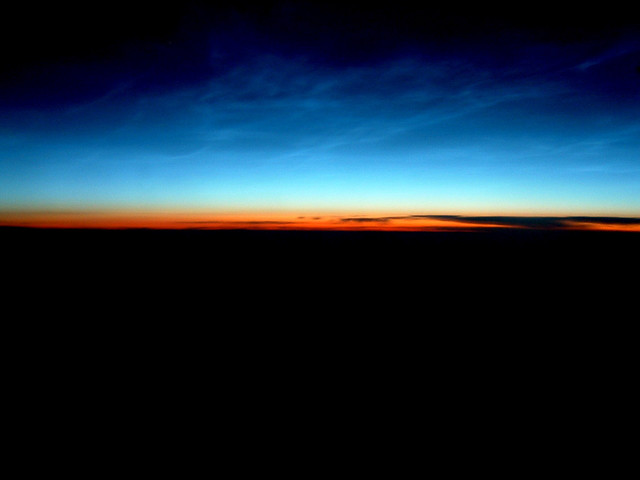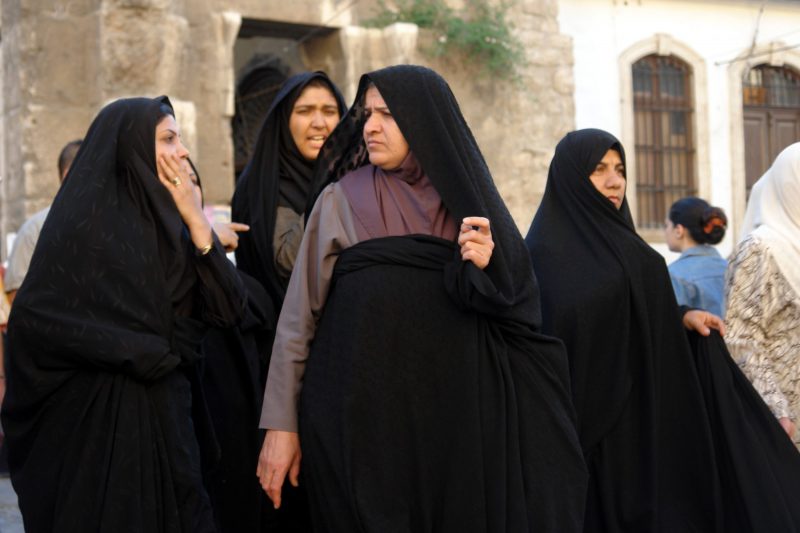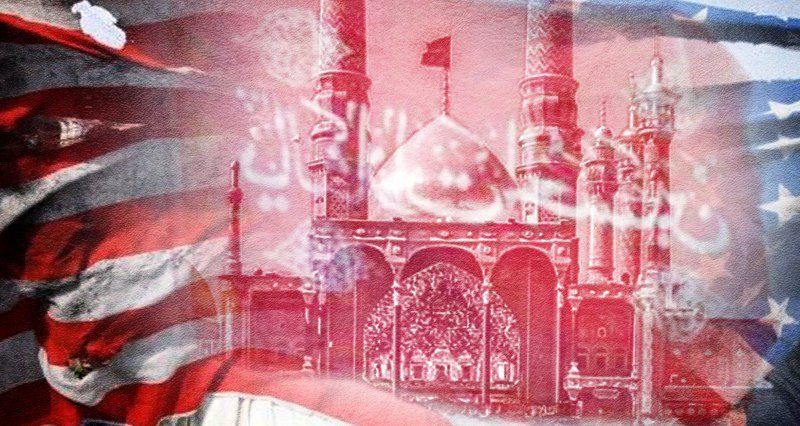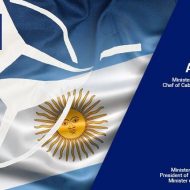Most experts believe that we should not expect a war between the US and Iran. However, the religious beliefs of political leadership in both countries might suggest otherwise.
A missing factor
The assassination of Iranian general Qassem Soleimani has led to fresh tensions between the United States and Iran. In response to the assassination of the high-ranking military figure, Iran launched a missile attack on US bases in Iraq (specifically, the US’ Ein Al-Assad airbase and a US airbase near the airport of Erbil). Both countries were poised on the verge of war.
Experts in the Middle East and beyond focused mainly on assessing military matters, the economic potential of the countries involved, the potential balance of losses and acquisitions for in the case of a conflict, etc. Looking solely at these considerations, most came to the conclusions that the aggravation in relations between the United States and Iran would not escalate toward a major regional war. The primary reason is that neither side is ready for such a war, especially when victory cannot be assured.
The history of mankind, however, proves that states often enter wars even when they are not beneficial. The logic of the development of events and the contradictions of interests points precisely to such an end, although the politicians involved may not even want a war.
The most characteristic example is the First World War: none of the participating states were looking for such a protracted and destructive conflict, but the logic of the two opposing military blocs left no other choice. Finally, the political decisions leading to conflict are made by people, not machines. People, particularly given exceptional circumstances, often act in a certain way not because they are calculating all gains and losses, but because they are acting in accordance to their experience and cultural background. Nobody can behave in such a way he cannot even imagine.
Light vs Dark
The motivations and specific actions of the leaders of the countries are largely determined by the political culture and the specifics of the psychology of a particular civilization. In the case of Iran, this context is related to both Shiite Islam and the specifics of the Iranian culture – the peculiarities of the Iranian worldview, at least from the time of the Achaemenid Empire.

Flickr
This culture can be described in the logic of binary confrontation: Light against Darkness, Ahura Mazda and Ahriman (Angra Mainyu): two equal strengths in ancient Iranian mythology. Iranian dualism does not initially imply the possibility of a compromise between Light and Darkness or any intermediate zone between them (in contrast to ancient mythology, which underlies European civilization).
Iranian tradition is based on the idea of immanent struggle. Sons of Light fight against the Sons of Darkness. It’s not just about winning, it is about fighting on the right side.
The very idea of eschatology, the end of the world, the final battle between good and evil in Abrahamic religions (Judaism, and later Christianity and Islam), according to many historians of religion, is a result of Iranian influence. The culture of Iran since ancient times is eschatology itself. The expectation of the end of the world is the fundamental basis of Iran’s cultural code.
This ancient attitude is still embodied in Shiite eschatology. Shiites are anxiously awaiting the end of the world and the appearance of the 12th and final imam, as the ancient Iranians awaited the coming of their messiah, Saoshyant.
It is noteworthy that the current constitution of the Islamic Republic of Iran contains an eschatological formula: the uncial case for the constitution of the modern state.
Article 5 of the country’s constitution reads: “During the absence (ghayba) of his holiness, the Lord of the Age, May God all mighty hasten his appearance, the sovereignty of the command [of God] and religious leadership of the community [of believers] in the Islamic Republic of Iran is the responsibility of the faqīh who is just, pious, knowledgeable about his era, courageous, and a capable and efficient administrator, as indicated in Article 107. ”
Thus, the supreme leader of the country, Rakhbar, is considered to be temporarily acting in absence of true Leader, an eschatological figure, the Mahdi or the 12th imam, who holds sole power in the Muslim community.
According to Shiites, the emergence of Mahdi (the savior who will destroy Dajjal (the Islamic counterpart of the Antichrist)) and the end of the world will be preceded by large-scale wars.
Since the time of the Islamic Revolution, the US and Western civilization have been perceived in Iran as the Great Satan, as a stronghold of Evil. According to the opinion of the Iranian scholar Shabbir Hassanally in an article published on the Grand Ayatollah Ali Khamenei’s website: “There is a discussion by some scholars and in some books of Islamic Eschatology of a system known as Dajjal; this system creates a particular scenario – where it renders the truth as falsehood and makes falsehood appear as truth. This sums up the American Empire to a tee.”

Wikimedia Commons
The red flag
“Inshallah (with God’s help), this year, Imam Mahdi, together with Jesus Christ, will come to help the people, end injustice and fulfill our desires,” said former Iranian President Mahmoud Ahmadinejad in his New Year’s message. This is a typical example of the fact that the worldview of Iranian elites is permeated with eschatological sentiments.
After the assassination of Soleimani, a red flag was raised over the mosque of the Holy Dome of Jamkaran (in Qum, the spiritual center of Iran), symbolizing that a large-scale battle would soon begin. The flag contains the Arabic phrase ” Ya la-Tharat al-Hussein,” which can be translated as “Oh, the avengers of Hussein.” Muhammad’s grandson, Hussein, is one of the most sacred figures of Shiite Islam, in which he is the embodiment of justice. He was killed in 680 at the Battle of Karbala, on the territory of modern Iraq, by the forces of Caliph Yazid.
It is worth noting that in the last three years, the red flag above this mosque was raised only in the month of Muharram, when Shiites recall the death of Imam Hussein. The appearance of the red flag is connected precisely with the murder of Suleimani. “So that all (Shia) believers in the world and all the freedom fighters gather around this flag to avenge Qassem Soleimani’s blood unjustly shed.”
According to some Iranian Shiite traditions, “Ya la-Thara al-Hussein” was to become the motto or code for believers, testifying to the appearance of the Hidden Imam, the last of the twelve imams.
Also, the red banner is related to the practice of putting it on the grave of the dead man who will be revenged. When relatives or friends take revenge for the murdered, the red flag on his grave is changed to black, the color of mourning. Red flags are placed on the graves of Shiite Imams, who all fell martyrs at the hands of tyrants, because their blood has not yet been avenged. When the Mahdi comes (the savior at the end of the world), he will make retribution, the red flags will be replaced by black ones.
Raising red flag over one of the most important Shiite holy sites in Islam associated with the name of Imam Mahdi, the Mosque Jamkaran, indicates the start of Iran in retaliation campaign for Soleimani’s murder.
The Iranian news agency Fars News (which is close to the IRGC), when reporting on the attacks against sites in Iraq, emphasized that a “mystical” burial of Suleimani occurred after the attack.
Awaiting the Dajjal
The religious and political leadership of Iran perceives its opposition to the United States as the opposition to Dajjal (the actual person or the system of injustice and lies, which he personifies).
At the same time, political instability in the land of Syria and Iraq and in Palestine contributes to the spread of eschatological sentiments in the Islamic world. According to hadiths and the opinions of authoritative Sunni and Shiite scholars, the Dajjal will appear in the region between Syria and Iran, or in Khorasan (but Mahdi will also come with «the black flags of Khorasan»). It is suggested that he might be of Jewish origin.
Shia Muslims believe that Imam al-Mahdi will go from Mecca to Jerusalem at which point a war will happen between the Imam and the Dajjal where the Dajjal and his army will be defeated. The Dajjal will be executed either in Syria or near Jerusalem.
On January 7, Christmas Day for Eastern Orthodox believers, Russian President Vladimir Putin visited the Umayyad mosque in Damascus, the mosque where the prophet Isa (Jesus Christ) will appear at the end of time, marking the coming end of the world. The Prophet Isa, according to Islam, will wage war against the Dajjal (Satan) along with the Mahdi at the end of time. The appearance of a Christian leader on Christmas Day in a mosque, which in Islam is associated with Jesus, can be an important sign for the mystically minded part of Muslims.
It is noteworthy that American popular culture fuels interest in the eschatology of Islam. At the beginning of the year, Netflix released a new series, “The Messiah,” where the main character is a person who is similar in descriptions to Dajjal.
This kind of news creates a specific psychological atmosphere in the societies of the Middle East and Iran. The intensity of conflict increases significantly. A society perceiving the US confrontation as part of an eschatological conflict will be ready for decisive action, even if it is not rationally beneficial.
A similar factor is present on the other side of the conflict. The eschatology of American Protestantism certainly does not help relax relations between the United States and Iran.
The Bible indicates that the troops of Gog and Magog will be destroyed in Armageddon (Ar-Mageddon, “the city of Megiddo,” or simply Megiddo is mentioned several times in the Bible, this city was located in northern Palestine near Lake Gennesaret). This will be preceded by the fall of Damascus .
Ready for Armageddon
A significant portion of American evangelical Protestants (“Dispensationalists” and related groups) believe that, at the end of time, the Jewish state and Protestants will oppose the Muslims and peoples of Gog and Magog (according to biblical tradition, such as Ezekiel prophecies). Hordes of Gog and Magog (Yajuj and Majuj in the Qur’an) will come from the north and are associated with Russia, however, some Protestants and religious Jews associate Iran as well as Turkey and President Erdogan personally with Gog and Magog.
For these people, the alliance of Turkey, Russia and Iran in Syria “is Indisputable Evidence of the coming Fulfillment of Ezekiel 38 and 39.”
The problem is that the US President Donald Trump needs the support of evangelical to win the 2020 election. His vice-president Mike Pence is evangelical himself, as is Secretary of State Mike Pompeo. Both are dispensationalists. According to the Washington Post, it was Pence and Pompeo who talked Trump into the assassination of Qasem Soleimani.
It is a close-knit and disciplined group that always supports Israel because it making closer the end of the days, Armageddon, the battle with Gog and Magog and the Second Coming of Christ. All the US’s anti-Iranian actions and the recognition of Jerusalem as the capital of Israel are largely aimed to receive their support. It is noteworthy that on the day of the assassination of Qassem Soleimani, Trump launched the “Evangelicals for Trump” coalition in Miami.









Leave a Reply